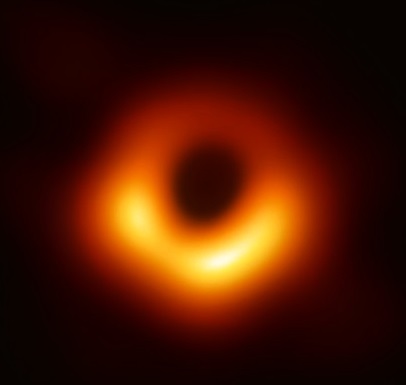In a young universe, we observe supermassive black holes. But how could they get there so fast? The solution could be supersymmetric gravity, which would be able to create nuclei of black holes in a hot universe, even before the formation of stars, thanks to its unique properties. Gravitins, however, are hypothetical, twice as much.
–
The supermassive black hole of the galaxy M87. Credit: EHT / ESO.
–
One of the great mysteries that surrounds the early universe, and of which we have at least some comprehensible information, is the presence of supermassive black holes very soon after the Big Bang. They are there and at the same time they are so massive that we do not know how they could have done it. We usually imagine that black holes are formed by the collapse of a star and then they absorb matter into each other. But it takes some time. Astrophysicists have various ideas for solving this mystery, and some of them include exotic new physics.

Krzysztof A. Meissner. Kredit: University of Warsaw.
–
Krzysztof A. Meissner from the Polish University of Warsaw and Hermann Nicolai from the Albert-Einstein-Institut in Germany suggest that the first black holes in the universe were not formed by the collapse of stars, but by clusters of extremely exotic particles, gravitin, born in chaos shortly after the Big Bang. Gravitins are hypothetical supersymmetric partners of hypothetical gravitons, particles that should mediate the action of gravity. Gravitina are thus hypothetical particles on the other.
The problem with gravitins is that they are not only highly speculative, but have recently been the subject of experimental results. It doesn’t look very good with their existence. However, if gravitin did exist, then according to some models, they have properties that could play the role of supermassive black hole nuclei in the early universe.

Hermann Nicolai. Credit: N. Michalke / AE.
–
The newly born and very chaotic universe did not seem to be a very favorable environment for black holes. There were no stars in it, let alone galaxies. It was actually filled only with radiation. If black holes were to form in such a universe, it would have to be fast. Nor would it be easy to keep such a black hole “alive”. The tiny black holes appear to evaporate intensely with Hawking radiation and could easily fade long before they could become supermassive.
This is the time for gravity. In at least one version of Meissner and Nikolai, gravitin could thrive in the hot early universe, like supersymmetric fish in water. And thanks to some of its remarkable properties, such as its ability to attract each other quickly by gravity, it could really become the nucleus of a black hole.
If such black holes formed in the hot soup of the young universe, they could grow so much that they would break free from the threat of death by evaporation and begin to suck in the surrounding radiation. This would give these black holes a significant time advantage and perhaps become the first supemassive black holes in the universe. However, building hypotheses on hyper-hypothetical particles is not very reliable.
Video: Institute Colloquium2019 “Quantum Gravity: Puzzles and Perspectives” By Dr Hermann Nicolai
Literature
– .


